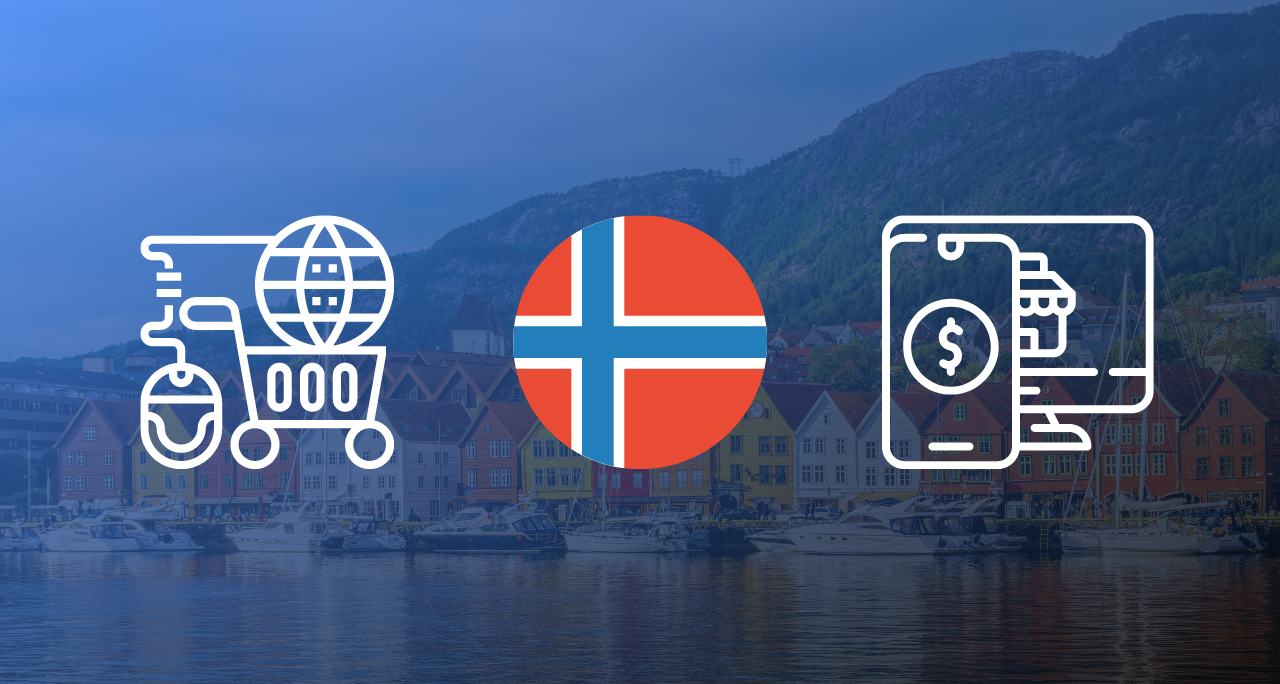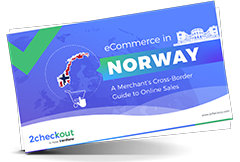As one of the world’s most wealthy and tech-savvy countries, Norway is an ideal target for eCommerce businesses. Its mature economy is made up of discerning and quality-conscious consumers that look for streamlined shopping experiences and innovative technologies that simplify online shopping.
The Nordic region has experienced a whopping 55% growth in eCommerce, in the two-year period between 2017 and 2019. With the onset of the COVID-19 pandemic in 2020, Norway continued to rely on its strong economic fundamentals and shifted even more of its consumer purchases to online stores. By the end of 2020, online sales in Norway surpassed forecasts. Analysts are expecting another record-breaking online shopping year by the end of 2021 even with the possibility of post-crisis eCommerce sales regression.
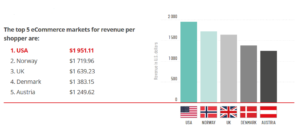
Source: Word Retail Congress
Norway’s population is denser in city centers, but its sprawling landscape lends itself to the convenience of online shopping. Many shoppers are even willing to wait a little longer for delivery due to their rural or remote locations. But some of the largest local businesses are major players in the eCommerce space, which can make it difficult for emerging businesses to find a place within the Norwegian eCommerce market.
While breaking into a new market may seem intimidating at first, this guide will help you understand how to appeal to Norwegian online shoppers and carve out your own eCommerce success story in this market.
Focus on mobile experiences
The Nordic region has long been known for its technological innovations and forward-thinking mentality. Norway was one of the first countries to use breakthrough 1G communication technology, leading to the mobile-centric culture we see today. Due to a combination of widespread smartphone usage and a healthy eCommerce marketplace, 53% of online transactions across the country are completed using a mobile device.
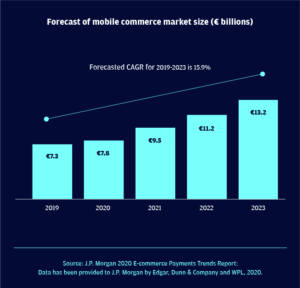
Source: J.P. Morgan
It’s expected that the gap between desktop and mobile experiences will continue to widen across the globe as mobile technologies become more accessible, and you can reasonably expect that Norway will be ahead of the curve. Businesses trying to break into the Norwegian eCommerce market should focus on optimizing their sites and checkouts for mobile shopping experiences.
Create interest in your cross-border bargains
Norwegian consumers typically look to support local brands even as they shop online, which creates another barrier for foreign eCommerce brands. However, high domestic prices often scare customers away. This means cross-border eCommerce stores might already have an “in” with Norwegian shoppers, in terms of pricing. In 2020, 25% of Norwegians shopped online cross-border.
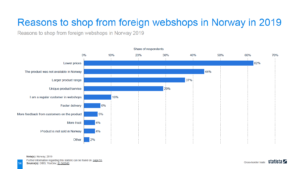
Source: Statista
While price is a factor, Norwegian shoppers still seek high-quality merchandise over cheap prices. Online shoppers in Norway aren’t picky about what they buy online and will buy from eCommerce stores in nearly every sector. At 27% of all eCommerce sales of physical goods in 2020, retail fashion is the most sought-after category, followed by beauty products, home electronics and pharmacy products.
Offer innovation for B2B SaaS to the software capital of the world
The B2B market seems to be booming across the world as businesses seek out platforms that help them keep up with rapidly evolving business environments. The B2B market in Norway is unique in that it is conducted on a highly personal level. What’s not unique is that, similar to other European markets, there are still hurdles in the B2B space for Norwegians to overcome, mostly related to complex industry pricing and the involvement of numerous third parties.
In 2020, 12% of Norwegian enterprises conducted online sales, while 57 of larger companies in the country report having conducted digital sales in the past 5 years.
Drive eCommerce growth with subscriptions
There are many factors that have contributed to Norway’s sustained eCommerce growth, but one of the biggest contributors is subscription services. Streaming video and software are the two biggest subscription markets in Norway. At 36% penetration rate for video streaming, the country ranks 4th in global charts, after the US, Sweden and Canada, while spending in the Subscription Video on Demand (SVOD) category increased 10% YoY in 2021 throughout the Nordics.
With a total market value of 2.836 billion US at the end of 2021, the Norwegian software market is also registering 7.3% YoY growth, and analysts expect it to reach 3.63 billion (US) by 2025.
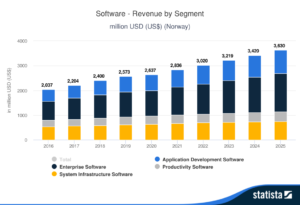
Source: Statista
eCommerce businesses should make sure to package and price their subscriptions as flexibly as possible for Norwegian audiences. 2Checkout platform data show that the average renewal rate for subscriptions in the country stood at 80% in 2020, with 55% of shoppers preferring annual renewals, while 40% opt for monthly plans.
Offer localized shopping experiences
Online businesses that intend to compete with big local online retailers in Norway should pay special attention that their website is localized for shoppers’ preferences. 61% of Norwegian shoppers on the 2Checkout platform prefer a native language experience during checkout.
Localizing the checkout process based on location is crucial to the continuity of the customer journey on your website and can bring significant uplift to your conversion rates.
Support multiple payment methods
Credit and debit card payments are the most popular payment method among Norwegian shoppers – 50% of Norwegian online shoppers paid for their carts with their cards in 2019. The cashless trend in Norway is expected to continue growing in coming years, with more and more users opting for advanced payment methods like digital wallets or bank transfers, to the detriment of cash.
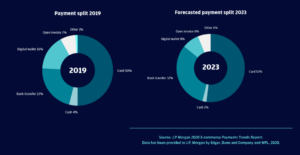
Source: J.P. Morgan
Merchants that want to break into the Norwegian eCommerce market should offer a wide array of payment methods in addition to debit and credit. Some of the region’s favorites include Klarna, Vipps, and digital wallets like PayPal, Skrill or Neteller.
Stay compliant with data privacy and taxation regulations
Data privacy in Norway is enforced through the GDPR, which the country formally adopted in July 2018. The Datatilsynet is the local agency responsible for enforcing and providing guidance with respect to all data protection issues.
As far as indirect taxation goes, Norway is not a member of the European Union so it employs its own VAT scheme. B2C online sellers in Norway need to register with the VAT on eCommerce scheme (VOEC) when the sales made to Norwegian consumers in a 12-month period exceed NOK 50,000 (~$5,700 US). For B2B online sales the reverse charge mechanism is employed, meaning no VAT is collected at checkout, but the buyer must provide a valid VAT ID.
The standard VAT rate in Norway was 25% in 2021, with some categories like eBooks or audiobooks benefiting from reduced taxation of 0%.
Final thoughts
Breaking into the Norwegian eCommerce market requires a few tweaks for cross-border merchants in order to gain popularity and support in one of the most eCommerce-friendly regions in the world.
Online businesses should focus on creating streamlined shopping experiences that include native language and currency, in addition to mobile-optimized websites. Frictionless checkout experiences with support for multiple payment methods and even tiered subscription billing can help eCommerce brands get noticed in the Nordic marketplace. Read our eBook to get your bearings on how to take on the Norwegian eCommerce market.

